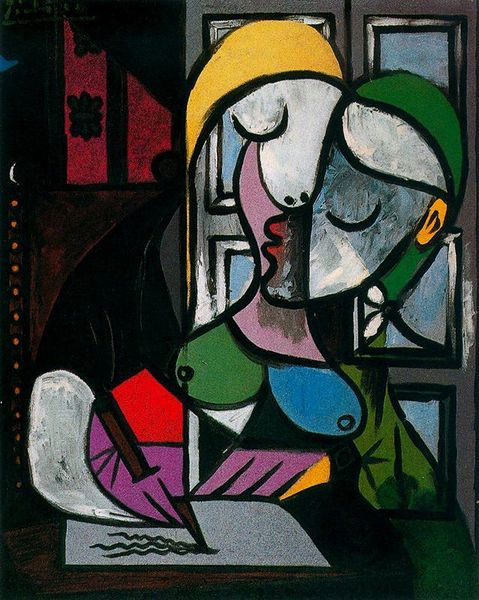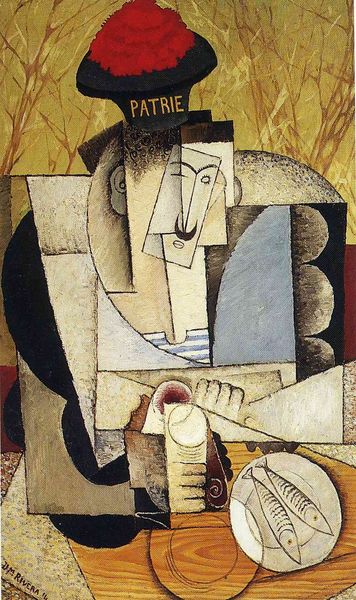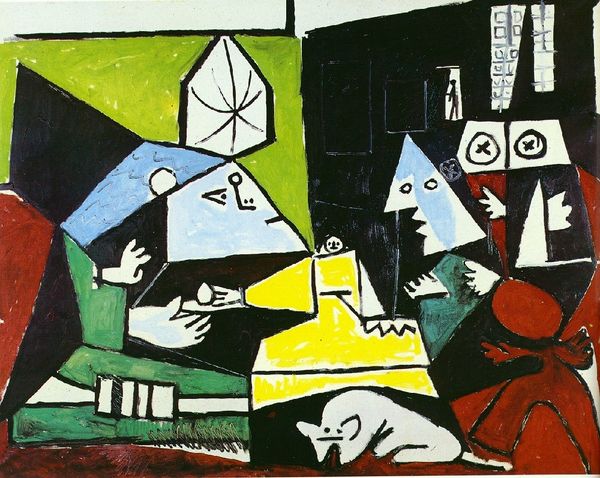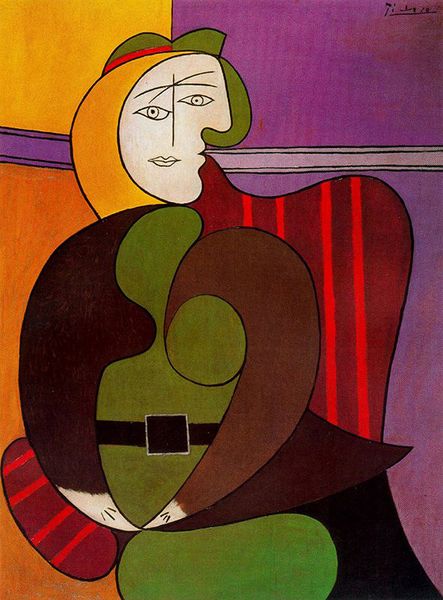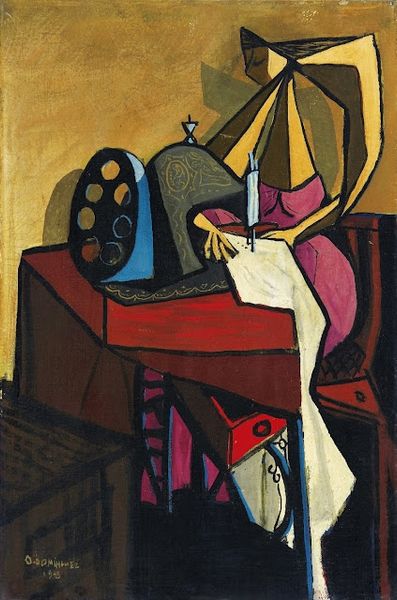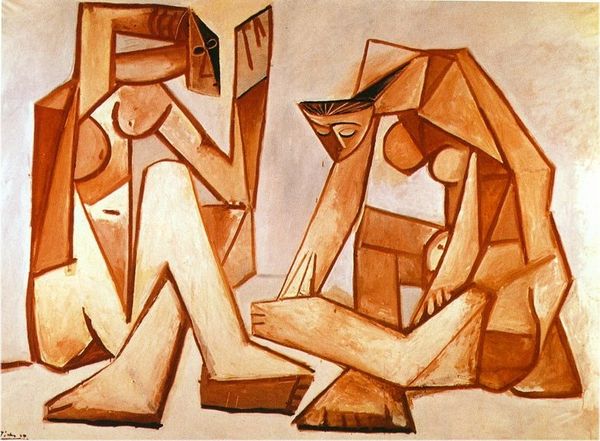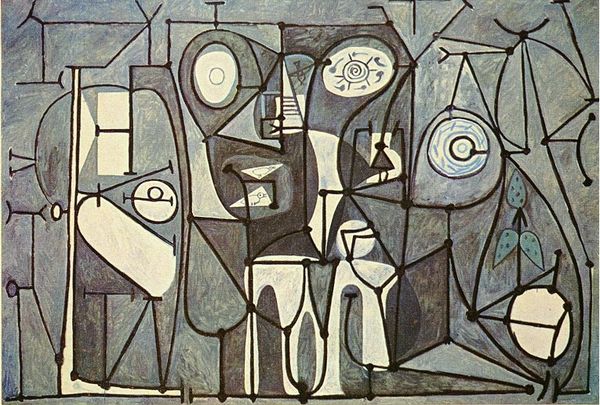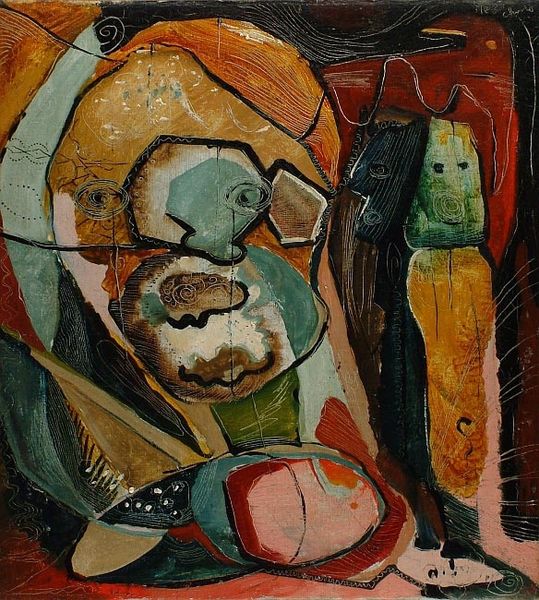
painting, oil-paint
#
cubism
#
abstract painting
#
painting
#
oil-paint
#
vanitas
#
acrylic on canvas
Dimensions: 89 x 130 cm
Copyright: Pablo Picasso,Fair Use
Curator: Take a look at this still life by Pablo Picasso, "Skull and Leeks," created in 1945. The oil on canvas has an arresting presence. Editor: The first thing that strikes me is the raw, almost brutal application of paint. There's a definite tension in the composition, with those clashing yellows and blues. It feels unresolved. Curator: That unresolved feeling mirrors the historical moment in which it was created, right at the end of World War II. The painting grapples with mortality against the backdrop of immense human suffering. It draws heavily on the 'vanitas' tradition. Editor: Absolutely, but what about the choice of materials? Oil paint provides a certain density and allows for layers to build up. You see how he uses it thickly in certain areas. The social context of a painting made with quickly drying and cheaper acrylic is just different. Curator: The skull as a symbol of death, and leeks, typically a sign of vitality, renewal, are thrown together; consider this against the legacy of conflict and human displacement. How does Picasso wrestle with existence when he doesn't see it as purely either/or? Editor: I am not quite convinced; to me the skull serves not merely as a symbol but more like a mass-produced item, a stand-in to explore form, perspective, maybe the painting itself. Picasso is less moved by high minded reflections of mortality. It's not merely philosophical pondering here, but something closer to how it relates to his studio practice and its many historical links. Curator: Well, I interpret this cubist rendering through a lens that is about interrogating history and the psychological impact of living under war. You're inviting a connection to its materials and industrial context. And maybe that intersection makes sense. Editor: Right, by zooming in on material and fabrication, maybe we have a framework to think about both Picasso's work and his worldview together. Curator: Agreed. Examining these still life objects through their cultural value as well as industrial origins opens up rich territory for understanding it, not just as art history, but an artifact that shapes a moment of social and political reckoning. Editor: Okay. I think looking at "Skull and Leeks" from these perspectives makes me respect its ability to invite and even maybe annoy people almost 80 years after its creation.
Comments
No comments
Be the first to comment and join the conversation on the ultimate creative platform.
